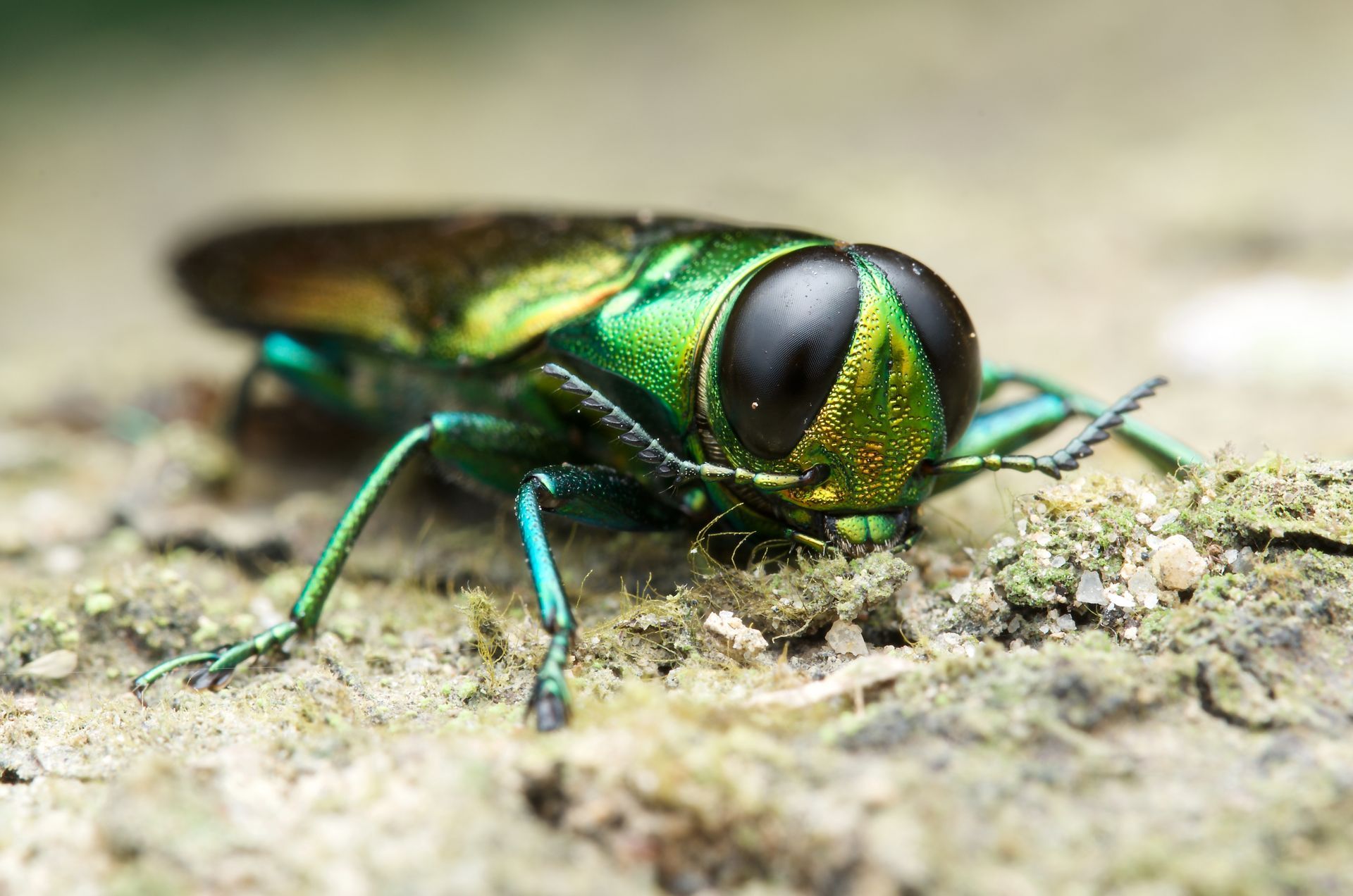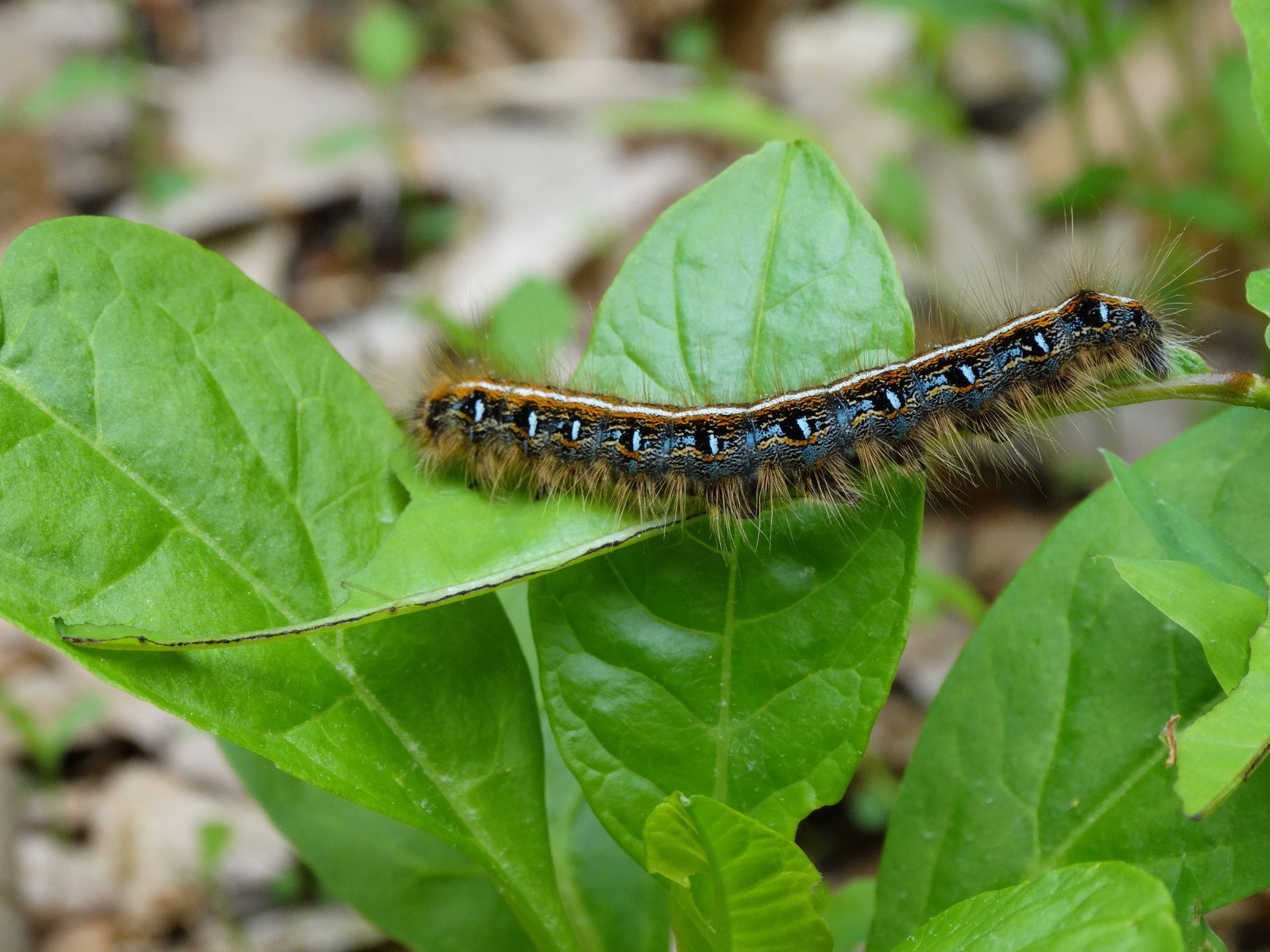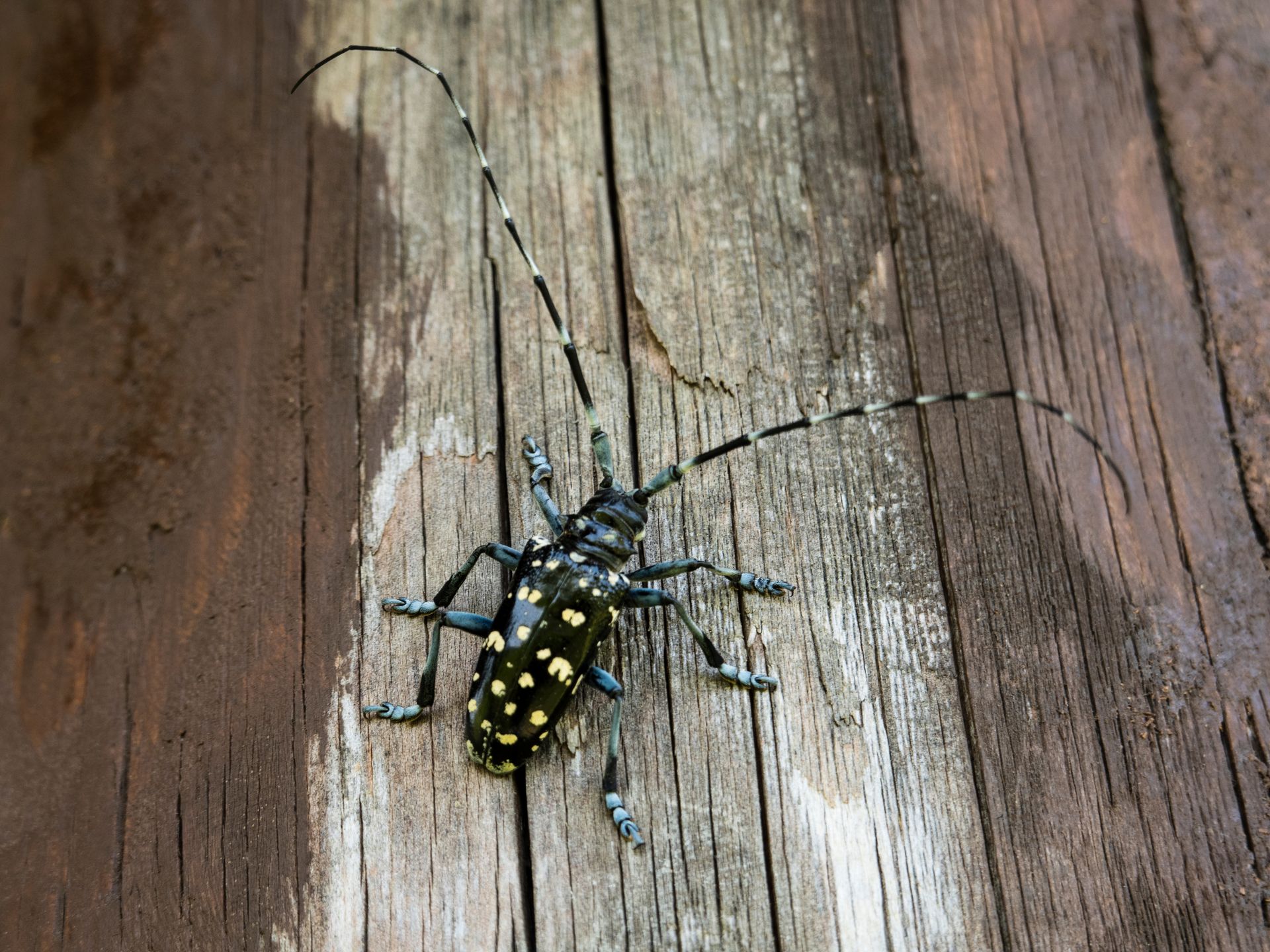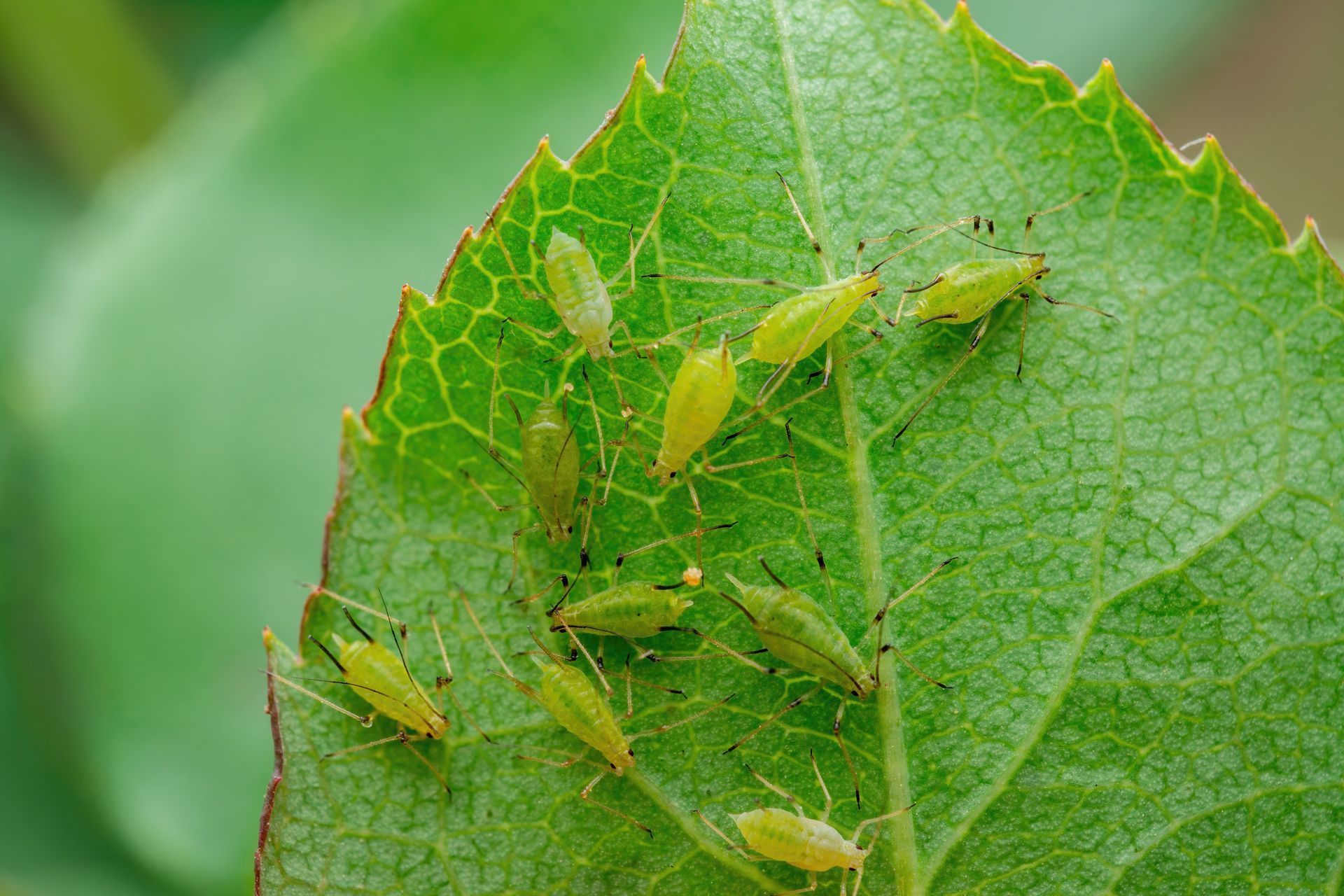Top 8 Bugs That Kill Trees: What To Look Out For

Bugs that kill trees are destructive pests that attack and kill trees either by eating the trees or boring into them. Some of the top bugs that kill trees are caterpillars, emerald ash borers, Asian long-horned beetles, weevils, gypsy moths, aphids, and spudsworms.
Table of Contents
Wood boring insects are tree pests that can tunnel under the bark in living wood and destroy the water-conducting tissues, ultimately leading to the tree's death. Other more common bugs are leafhoppers, caterpillars, aphids, and moths.
Bugs can disrupt photosynthesis in trees by weakening their xylem and phloem tissues or introducing disease that interferes with the tree's life cycle.
Insect infestations can cause a tree to become brittle, break easily in storms, and die from loss of vital nutrients and water. Below, we discuss the main bugs that kill a variety of different tree species.
The Top 8 Bugs That Kill Trees
Cracked bark, cankers, and calluses mark bug infestation sites on trees. But all insects that kill trees have their distinct characteristics. Some are borers, while others are sap-suckers. We cover pretty much all of them below.
Forest and Eastern Tent Caterpillars

Eastern Tent Caterpillar (Malacosoma americanum) and Forest Tent Caterpillar (Malacosoma disstria) are two caterpillar species that destroy trees by defoliating them. These caterpillars feed on the leaves of deciduous trees, depriving the tree of vital nutrients and water.
The Eastern Tent Caterpillars have dark heads with prominent yellow and white stripes down the center of their bodies. They are also recognized by small blue spots on the side of their body.
Their preferred host trees are crabapple, apple, and black cherry. They form a spindle-shaped mass around the tree's twigs that appears dark and has a rough varnished texture.
Meanwhile, Forest Tent Caterpillars have a blue head with a central row of yellow or white markings in the shape of a footprint or keyhole. Like their Eastern Tent family members, they form structures around the tree's twigs.
But they prefer feeding on birch, black gum, sugar maple, aspen, and oak trees. A Forest Tent Caterpillar outbreak occurs at 10-year intervals and lasts 2 to 4 years. These outbreaks are common in forests with large aspen tree populations.
How To Get Rid of Them
The management for both types of caterpillars is similar, except that you can remove and destroy the nest of Eastern Tent Caterpillars - an ineffective strategy for Forest Tent Caterpillars.
The key is to remove the Eastern Tent Caterpillar's egg masses before they hatch. Use a stick or pole to remove the masses from twigs and tree branches.
You can also use organic methods to rid a tree of these caterpillars. Some of them include the following:
- Using Bacillus thuringiensis: Bacillus thuringiensis is a type of bacteria that effectively controls caterpillars. It works by causing the caterpillar to stop eating, eventually killing them.
- Spinosad: Spinosad is a natural insecticide derived from soil bacteria that interferes with the insect's nervous system.
- Insecticidal Soap: You can also wash the tree with insecticidal soap. But be careful not to overuse it since it can burn the tree's leaves.
- Neem Oil: If the caterpillar larvae are still small, apply neem oil to the infested parts of the tree.
Some other insecticides commonly used to kill these caterpillars are carbaryl (Sevin®) and malathion. However, consulting with your local extension office before using these chemicals is essential.
Emerald Ash Borer

The emerald ash borer (Agrilus planipennis Fairmaire) is an exotic beetle discovered in North America for the first time in 2002.
Since then, this bug has killed millions of ash trees in the country. It has also prompted the USDA (United States Department of Agriculture) to issue a federal quarantine on the transport of ash trees and firewood in some states.
The emerald ash borer's larvae feed on the ash trees' bark, disrupting the tree's ability to transport nutrients and water. By 2018, the ash borer had been found in 35 states.
How To Get Rid of Them
If you think the emerald ash borer has infected ash trees in your area, use the identification guide to confirm the bug's presence. Once you've confirmed that it's the emerald ash borer, find the contact details of your county's extension office here.
Contact the local office to get advice and alert them about ash borer presence. They will either use parasitoids, such as native woodpeckers, or chemical insecticides to kill the beetle.
The four commonly used insecticides for emerald ash borer control are:
- Imidacloprid
- Dinotefuran
- Emamectin benzoate
- Azadirachtin
Imidacloprid is the easiest to apply and the least expensive. But you should still heed your local office's instructions before using any insecticide.
Did You Know? The USDA has a national hotline where you can report emerald ash borer infestations. Call 1-866-322-4512 if you see an emerald ash borer in your area.
Asian Long-Horned Beetle

The Asian Long-Horned Beetle attacks hardwood trees and does not have a cure. The only way to deal with it is to identify it early in its lifecycle and eradicate it. It has been found in Massachusetts, New York, Ohio, and South Carolina.
Western states have not reported occurrences of this bug that kills trees, but they should still be alert. The Asian Long-Horned Beetle attacks the following tree species:
- Ash tree
- Birch
- Elm
- Horse chestnut/buckeye
- Golden Rain Tree
- Mimosa
- Mountain Ash
- Poplar
- Willow
- London planetree/sycamore
- Katsura
- Maples, including boxelder, red, silver, and sugar maple
Adult beetles have bullet-shaped bodies ranging from 3/4 inch to 1.5 inches long. Their bodies are shiny black and have white spots on them. They make pencil-sized holes in the tree for entry and exit, resulting in sawdust buildup at its base.
How To Get Rid of Them
Since Asian Long-Horned beetles spread easily, you should move firewood infested with this pest. If you suspect the presence of this beetle in your area, get in touch with the relevant authorities.
Weevils
The black vine weevil and two-banded Japanese weevil species feed on notching leaves on trees. These immature forms, or grubs, feed on tree roots.
A weevil infestation spreads slowly across the tree, and once the plant gets infested, the insect population sees a quick rise. Weevils infect over 100 plants, including trees like maple, oak, and birch.
How To Get Rid of Them
Novacide is the best pesticide to deal with weevils since it has a dual effect. It kills adult weevils and regulates the larvae's growth, preventing them from reaching full maturity.
The residual effect of Novacide remains for up to seven months, so it does not require frequent applications.
Ips Pine Beetles
Ips Pine Beetles or pine bark beetles feed on the inner bark of pine trees, infecting the phloem tissue, which is responsible for transporting the nutrient and water to other parts of the tree.
Common hosts of Ips Pine Beetles include loblolly pine, longleaf pine, pond pine, sand pine, shortleaf pine, slash pine, and spruce pine.
Early in the infestation, you will notice the pine trees foliage losing its color from green to yellow to reddish-brown. These color changes take a few months in winter, but in summer, they occur in just two to four weeks.
How To Get Rid of Them
When the Ips infestation is scattered or small, the best course of action is to let it die out on its own. But if it spreads, you may have to apply an approved insecticide to the tree.
Contact your county's Cooperative Extension Service office for recommendations about the right insecticide.
Gypsy Moths
Of all the tree killing bugs, the gypsy moth is one of the most destructive. Although these caterpillars feed on many broadleaved trees, they have a preference for oaks in forests.
The major issue with gypsy moths is the quick spread of their population, which results in high moth densities in oak populations. The host tree may recover from a moth infestation. But repeated infestation can impact the tree's long-term health and might lead to its death.
How To Get Rid of Them
You can scrape gypsy moths off the trees and burn them. Then, place sticky bands around trees to keep larvae from climbing the plant. Some insecticides used against gypsy moths include lead arsenate, DDT, Orthene, and carbaryl.
Meanwhile, the biological insecticide Bacillus thuringiensis (Bt), and the natural virus, Gypchek, are also often used in eradication and impression efforts. But you should consult a specialist to understand which works best for your situation.
Aphids

Aphids are tiny, pear-shaped insects that feed on the sap of trees. They are usually found in large colonies, and their presence can result in several problems, like yellowing and curling of leaves, stunted growth, and sooty mold.
The most common aphids that attack trees are the pine aphid, pear-pine aphid, hawthorn aphid, and apple grain aphid.
How To Get Rid of Them
The simplest way to get rid of aphids is to use Neem. While it does not kill the insects on trees, it discourages their feeding. The lack of food and nutrients results in the aphids' death.
You can also use pyrethrins, horticultural oil, and insecticidal soap to control aphids. Spray the underside and the top of the leaves to target the entire population.
Aphids may also be controlled using imidacloprid and dinotefuran, systematic products applied to the soil. Once absorbed by the tree, they work through the tree's vascular system and can remain active for up to one year.
Spuds Worms
Spudsworms or wireworms are soil-dwelling larvae that feed on plant roots, making them a great threat to crops and trees. The beetle's bodies are cylindrical and slender, often yellow to brown in color.
Their life cycle lasts 3 to 4 years, giving them enough time to do great damage.
How To Get Rid of Them
It's best to till the soil around your trees to eliminate the spudworms. You can also use baits containing an insecticide, such as methomyl or carbofuran, to kill them.
Sweet New Earth's Final Say On Tree Killing Insects
By now, you should know all the bugs that kill trees and how to kill them. Bugs that eat trees can result in poor foliage growth, disrupted root systems, and in some cases, even the death of your tree. Whether it's fruit trees or oak trees, an uncaught bug infestation can take out an entire tree.
While insecticides and pesticides are readily available, you should be careful in their use. Often, these chemicals also kill beneficial insects like bees and butterflies. If you feel like you have an infection, be sure to call your local tree arborist for help.
The best way to protect your trees is to keep them healthy with regular fertilization and pruning. If you suspect the presence of insects that destroy trees, get in touch with local authorities for more guidance on eradicating these invasive insects.
Before you go...
Now that you know what bugs kill trees, you might want to know about some other diseases trees can face. Be sure to read some of our articles on the various different fungi, or sores that trees can develop that could jeopardize their health forever...
Related Articles:

Christina Hernandez
Christina has done most of her research on environmental science but recently has changed her focus towards sustainable forestry. She has a passion for the outdoors and wants to spread that passion to the world.
Join our community!
Join to receive guides, insights, and the latest gardening deals!
